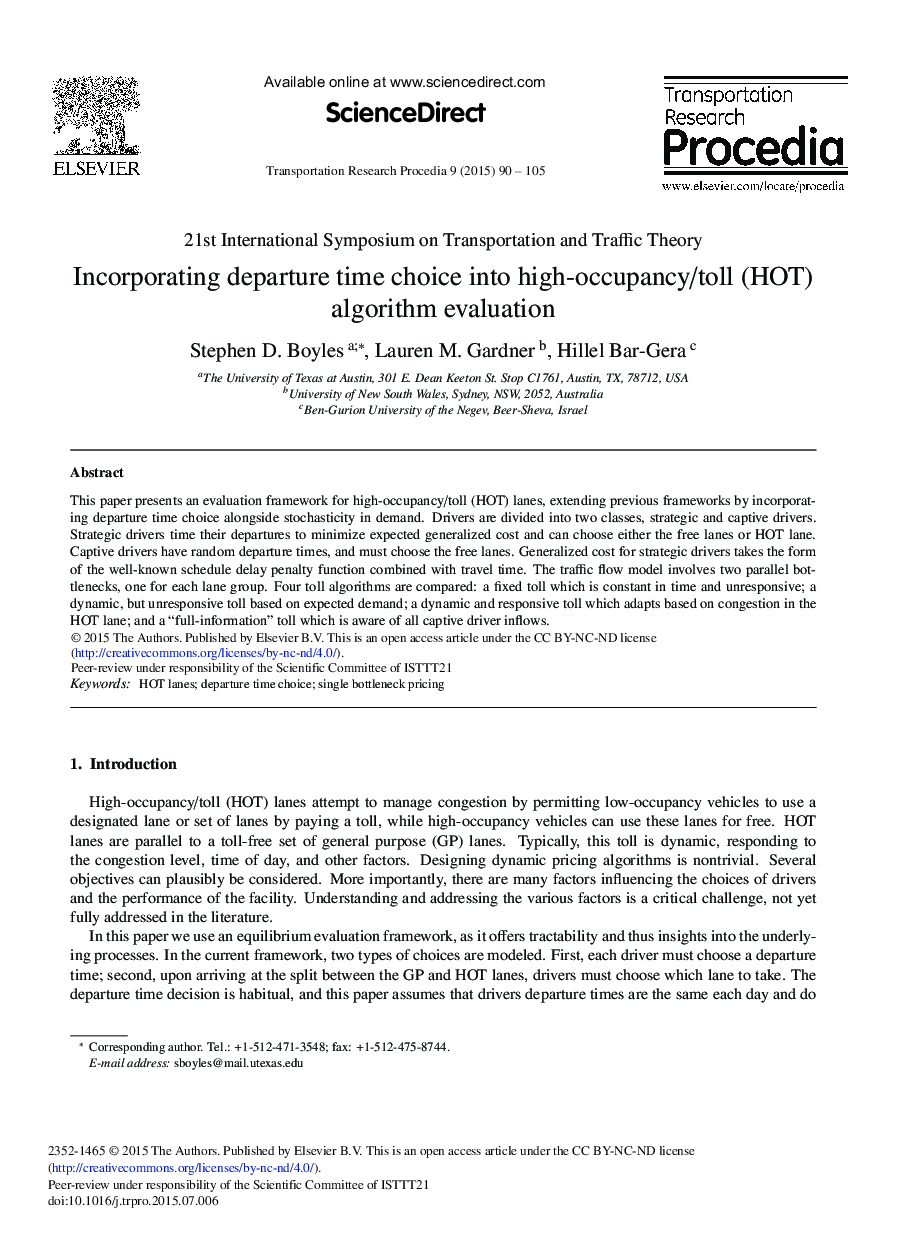| Article ID | Journal | Published Year | Pages | File Type |
|---|---|---|---|---|
| 1106360 | Transportation Research Procedia | 2015 | 16 Pages |
This paper presents an evaluation framework for high-occupancy/toll (HOT) lanes, extending previous frameworks by incorporat- ing departure time choice alongside stochasticity in demand. Drivers are divided into two classes, strategic and captive drivers. Strategic drivers time their departures to minimize expected generalized cost and can choose either the free lanes or HOT lane. Captive drivers have random departure times, and must choose the free lanes. Generalized cost for strategic drivers takes the form of the well-known schedule delay penalty function combined with travel time. The traffic flow model involves two parallel bot- tlenecks, one for each lane group. Four toll algorithms are compared: a fixed toll which is constant in time and unresponsive; a dynamic, but unresponsive toll based on expected demand; a dynamic and responsive toll which adapts based on congestion in the HOT lane; and a “full-information” toll which is aware of all captive driver inflows.
